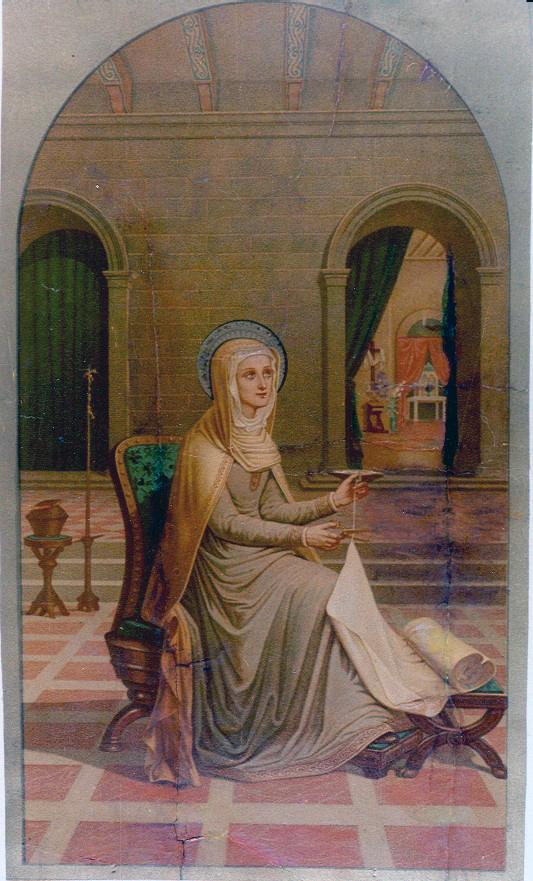
One of the most interesting representations of Mater is entitled Mater in the House of St. John. An account from Spain tells us:
For many years an unpretentious print circulated among us; we could see that this was Mater in her old age, but where had it come from? A book found in the Valle library (Seville) gives us the data to identify it. In 1882, Father Perdrau, Pauline's brother, wrote The Blessed Virgin's Last Years, with an imaginative zest worthy of the apocryphal gospels. His sister painted Mary in her own setting. She was still Mater, but with evident differences: the place, the attitude, the position of the symbols that spoke to so many generations of little girls, Mary's aging features, the darker shades that include both her dress and the evening sky, in contrast with the brightness of the Temple.
“Mother Perdrau is in tune with Mary in all her mysteries, so she naturally wants to live with her in St. John's home at Ephesus.” This was certainly what inspired her desire to paint her last picture: Marie chez l'apôtre bien aimé [Mary in the House of the Beloved Disciple]. She had already thought of it while still in Paris, for the ideal of Mary's last years had long been very dear to her. She had made the first sketch at the rue de Varenne and had even shown it to Mother Goetz, making a gift of it to her superior in 1873.
For some days we saw Mother Perdrau shut in her studio, absolutely forbidding anyone to go in. What's going to come out of there? people were asking. Finally, on May 24th, the secret was revealed. When we came into the community room, we saw the first sketch of this beautiful work, bathed in evening light.
The sincere admirers of the picture urged Mother Perdrau to reproduce it life-size, to complement her first work: Mater Admirabilis of the Trinità. At this time, Father Perdrau was writing his book, Our Lady's Last Years, and he asked that his sister's picture be included in the publication. She had let her brushes lie idle for a long time and could not make up her mind to paint again. And yet she felt that the requests made to her were a sign of God's will… She prayed about it, and during the holidays of 1878 she set to work. The seaside place, Marseilles, where she brought it to completion was exceptional in its light and color and in the richness and variety of nature. The work was finished on the eve of the feast of Our Lady of Sorrows that same year. The members of the Marseilles community were the first to pay homage.
Mother Perdrau's work met with a warm reception in many parts of the Society of the Sacred Heart, but it was a sorrow to her to learn that the superior general, Mother Lehon, did not like it; she could not accept the idea that our Lady aged and declined physically. Pauline's brother asked if our Lady had granted some special grace for representing her at an age at which she is generally unknown. She answered:
Yes, she granted me a simple favor mentioned in the Exercises [of St. Ignatius]. She showed me my final end, almost as clearly as if I saw it by the light of day, and I understood that the only way to unite my heart to the hearts of Jesus and Mary is humility, death to self.
Source of the information: Le peintre de Mater et le chantre de l'Enfant Jésus [The Painter of Mater and the Singer of the Child Jesus], published in 1927, contains all that is officially known about this painting.



